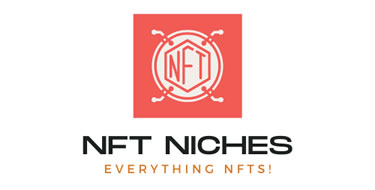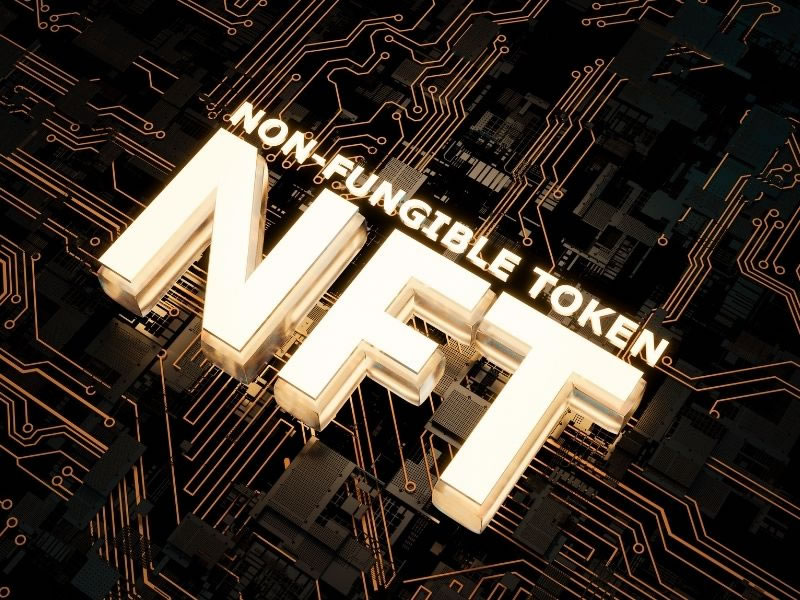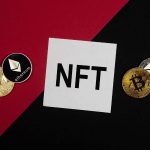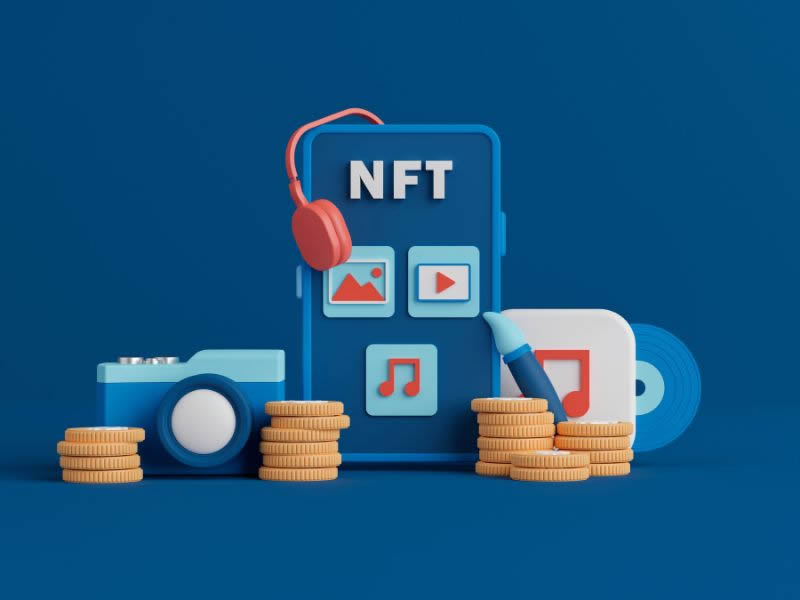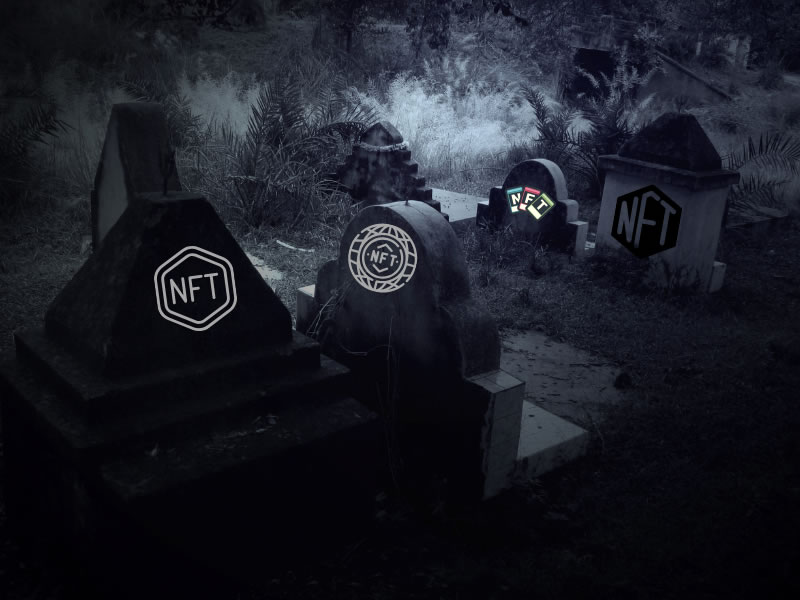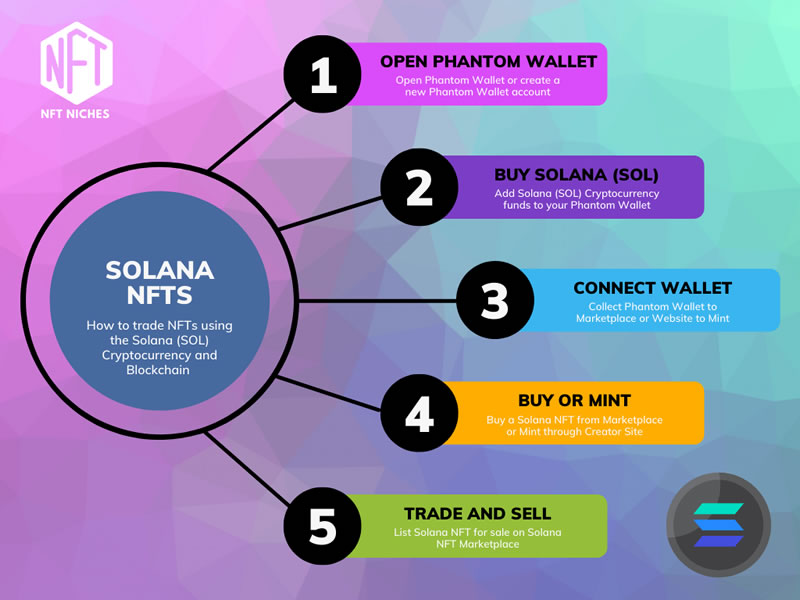With the number of NFTs being launched, the days of investing and making an easy return are diminishing, so being able to spot the good NFTs from the bad NFTs is more important than ever.
On average 94% of NFTs launching today will fail to be profitable within 4 weeks.
This is excluding the additional charge of the gas fee, which – especially with Ethereum mints – makes a return on investment even more difficult.
There are ways of being able to tell the different between a good NFT and a bad NFT with some tricks of the NFT trade!
Only 5% of the worth of an NFT can be determined by just looking at the piece on its own without the story behind the NFT, the founders, the roadmap, and the popularity.
Only when you combine each piece of information, and the overall story behind the NFT, can you start to see whether it is a good NFT or a bad NFT.
It is also more difficult to determine whether an NFT is good or bad before they start minting.
After the mint it is easier to see whether the NFT collection has signs of being an immediate or long-term success.
In this guide we will look at those things the whales and alphas are researching before they invest in any NFT project, and how to determine whether an NFT is good or bad.
How to tell whether an NFT is Good or Bad
I have done a lot of research on NFT releases.
I have analyzed in detail the hype, follower numbers, whitelist mint volume, public sale volume and the floor price as the project continued through its roadmap.
There are certain characteristics and patterns that instantly jump out and using these characteristics as a guide can help reverse engineer these patterns to see whether a project has a chance of taking off before it even starts minting!
Let us walk through these one by one, the first few sections apply to NFTs that have yet to mint.
Popularity of the NFT Project
When looking at analyzing any NFT project, the first thing to look at is the popularity of the social channels the project has set up.
In the main these will be Twitter and Discord.
A Twitter following of more than 5,000 and a Discord members of more than 10,000 will indicate a good amount of interest.
If though social following is less than these, it doesn’t necessarily mean the NFT project is bad.
It may be that the NFT project has only just started its journey, and only recently launched its social media channels, and therefore one to watch closely.
Popularity behind an NFT project is everything.
Without demand the collection will not sell out, which is bad for the project, and they may not collect enough in sales to deliver on their roadmap, but also without demand any NFT purchases will not lead to a return on investment as no one will want to buy them.
Engagement on Social Media Channels
Popularity is certainly a factor when it comes to assessing whether an NFT is good or bad, but it can’t be used on its own.
It is very easy for an NFT project to artificially inflate their follower numbers by buying fake followers from online services.
Although it’s easy to inflate social media followers, it isn’t so easy – although not impossible – to fake engagement.
I have seen NFT Twitter accounts that achieved 50,000 followers within a few weeks, just their posts attract just a handful of likes.
If the demand around such an NFT project is as big as the social following suggests, there should be a greater number of retweets, likes and comments against each post.
A high number of followers with low engagement per tweet is generally a red flag.
In contrast, a high level of engagement shows popularity.
This is also seen on Discord.
Some Discord NFT projects show over 100,000 members, yet the general chat channel looks like a ghost town. This again is a red flag.
High engagement in both Twitter and Discord are good signs of a healthy NFT project!
Utility or Reasons to HODL
Just eighteen short months ago a cartoon ape could have been a good enough reason to want to hold on to an NFT (or HODL – Hold On for Dear Life).
So many NFT buyers are looking for a fast flip.
The NFT projects that are likely to succeed in the long term are those that offer a god enough incentive to keep hold of an NFT, even if its rarity doesn’t put in to the immediately profitable top 5%.
If not, as soon as the rarity is released there will be the almost immediate wave of NFT sales from the collection, each trying to undercut the other on price to recoup back some of the mint fees.
If there are benefits of holding on to your NFT, even if the rarity is low, it can prevent an influx of NFTs put up for sale.
Unfortunately for the NFT project, if the number of NFTs up for sale are higher than the demand to buy, the sale price will start decreasing to meet the low demand.
Once this happens, and the floor price falls, the NFT collection is seen in a bad light which is a red flag for any would be NFT buyer.
There are various benefits and utility made available by NFT projects to keep buyers holding rather than selling.
These include:
- Tokens or Coins to earn a passive income
- Alpha information or other NFT Whitelist opportunities
- Free merchandise
- Free NFT drops and competitions
- Exclusive events and offers
The benefits are paid for from the sale of the NFTs, as well as the other road map items.
The reason an NFT project will want to keep buyers holding their NFT, and the overall floor price to rise, is because of the royalties involved.
When you mint an NFT it often comes with the condition that any future reselling of the NFT means a royalty – usually between 5% and 10% – is paid to the NFT founder or project.
This royalty back to the NFT project happens on the first sale or even tenth sale.
For example, if an NFT was resold eight times from different sellers to different buyers, and on average each NFT sale was made for 2 ETH, it would mean a royalty of up to 0.2 ETH would be paid from the sale to the NFT project each time.
A 2 ETH sale would mean 1.8 ETH to the seller and 0.2 ETH back to the NFT project.
Therefore, 0.2 ETH multiplied by 8 sales means 1.6 ETH is paid back to the NFT project just for ongoing sales.
As the blockchain has recorded the wallet the NFT was minted from, and a full audit history, it means this royalty is paid automatically.
The higher the value the price of ongoing NFT sales from the collection the more royalties are paid to NFT project – even if the NFT is later resold in five years-time.
The more attractive the NFT project can make to holding an NFT in its collection to reduce supply, and at the same time continue to boost demand through marketing efforts to increase demand, the floor price and selling price for each NFT will rise.
This is a win-win for both the NFT holder and the NFT project.
Ability of the NFT Founders
For an NFT project to survive first twelve months after launch, and achieve the goals set out in the long-term roadmap, it needs the right founders behind it.
The best of intentions isn’t good enough on its own to manage a deliver a multi-million-dollar startup.
This is essentially what an NFT project is.
Many founders of NFT project remain hidden behind the scenes. In part it can be to hide a lack of experience, for security reasons or to hide the fact they may have been part of a ‘rug pull’ NFT project in the past.
The NFT projects that are doing well today are those with not only visible founders behind the project, but those founders with previous startup or NFT experience, contacts, and those part of the uber-popular NFT projects like Crypto Punks and Bored Ape Yacht Club.
The due diligence of the founders, their following and the designer behind the project – as well as the past sales and fans in the art world – are all key factors when deciding whether an NFT collection is good or bad.
Find well connected visible founders with successful NFT experience in the past are a attraction for NFT buyers and usually attract a lot of attention fast.
Conclusion – Difference Between a Good NFT and Bad NFT
When it comes to trying to see whether an NFT is good or bad, here is a summary of the main characteristics to look out for:
- Popularity of the NFT project – the higher the better
- Engagement on the NFTs social channels
- Ongoing utility or reasons to HODL
- Capability of the NFT founders to deliver on the long-term roadmap and vision
If the NFT has already minted and the public sale has already happened, it is key to look at the sales volume.
Did all the pre-sale whitelist volume sell out and did all the public sale mints sell out.
If not all NFTs sold it often highlights the marketing and popularity of the NFT project are low and will probably not survive the longer term – unless something major changes.
Due diligence and analysis are essential for determining whether an NFT is good or bad – without adequate research it is nothing but guesswork, and when 94% of NFT projects do not return a profit, the odds are stacked against you.
